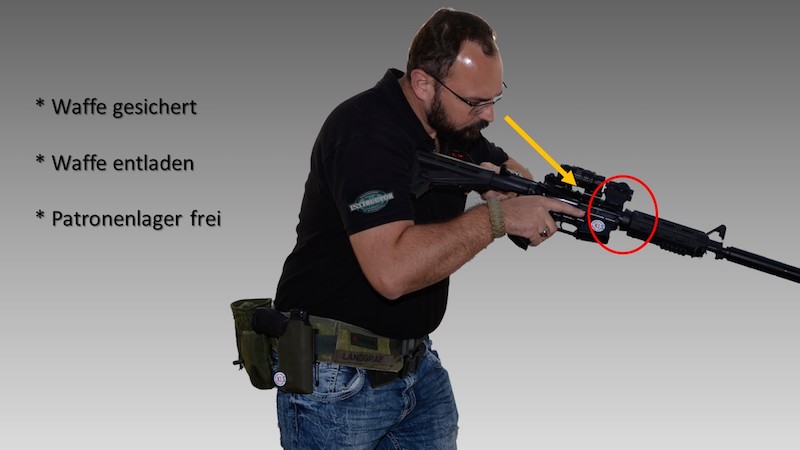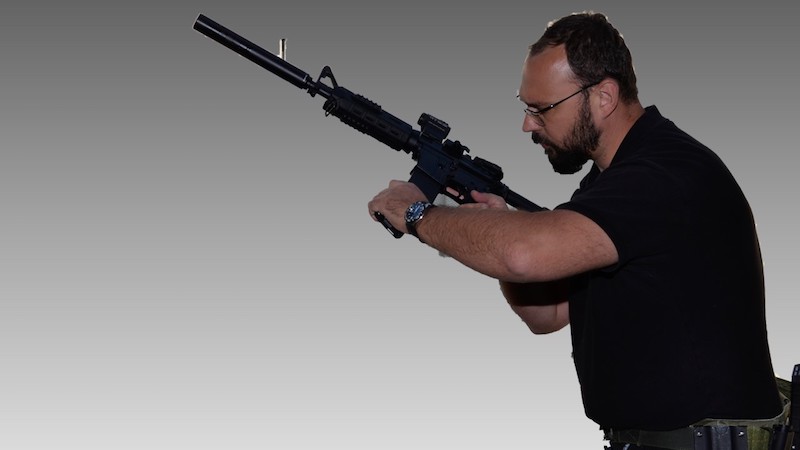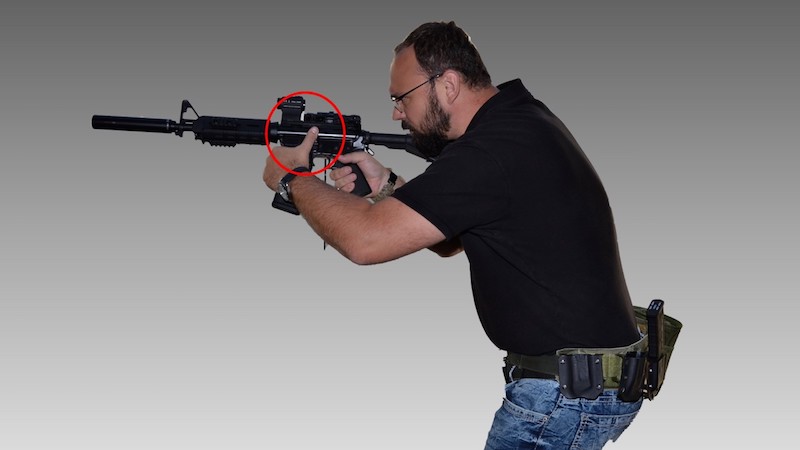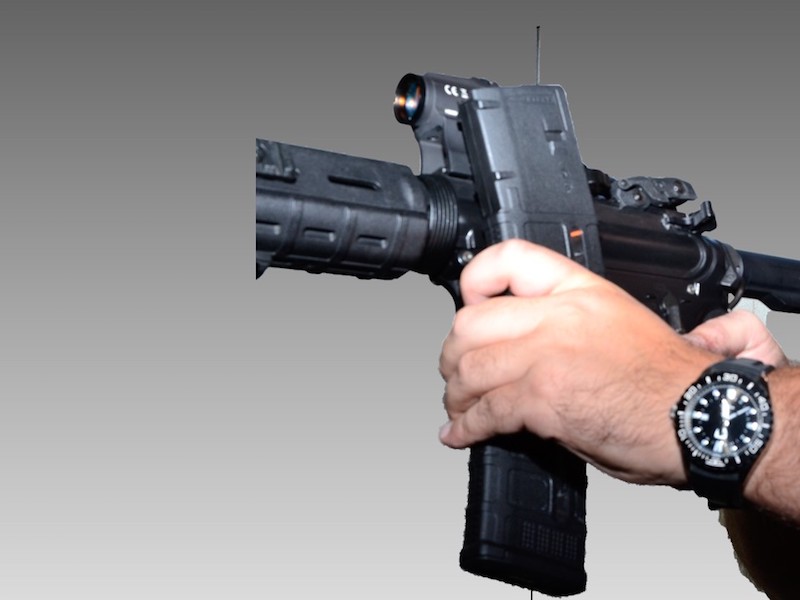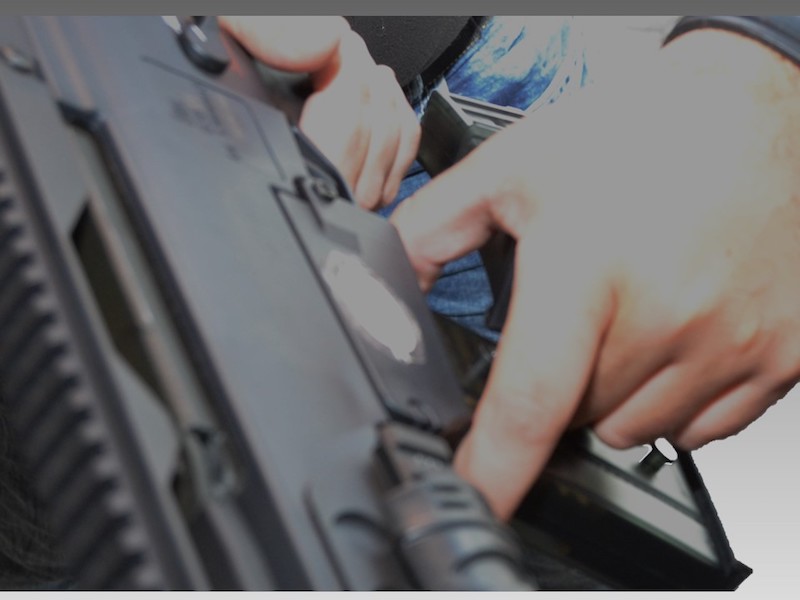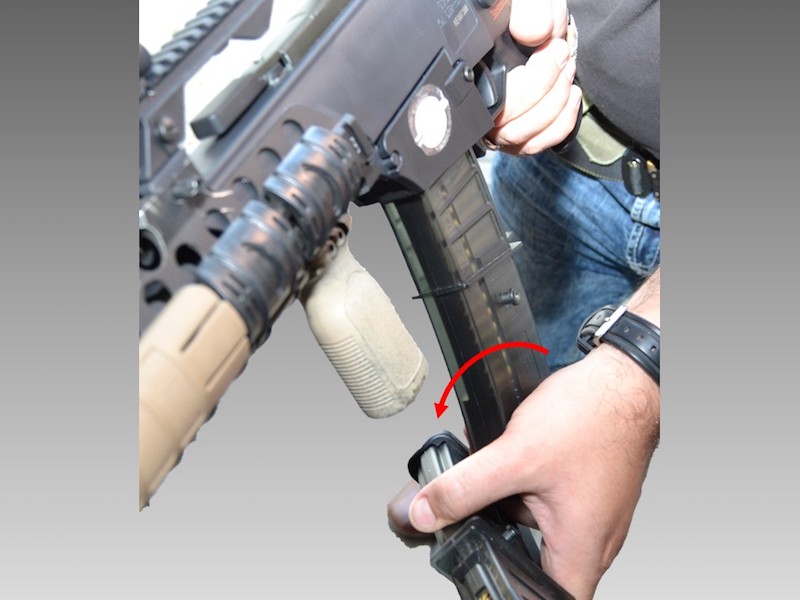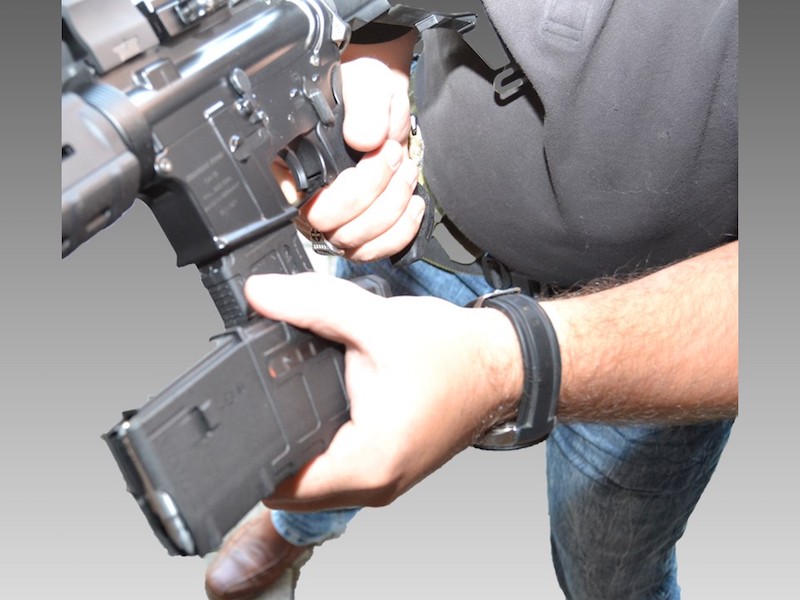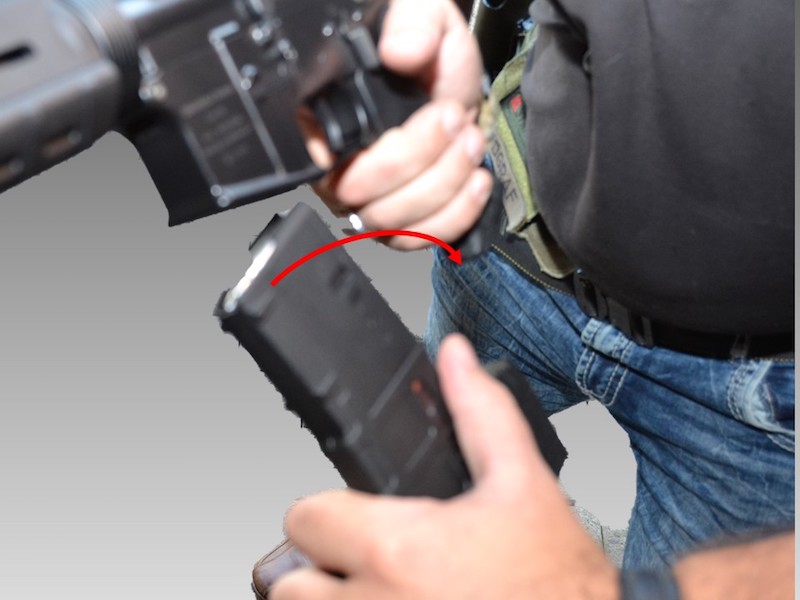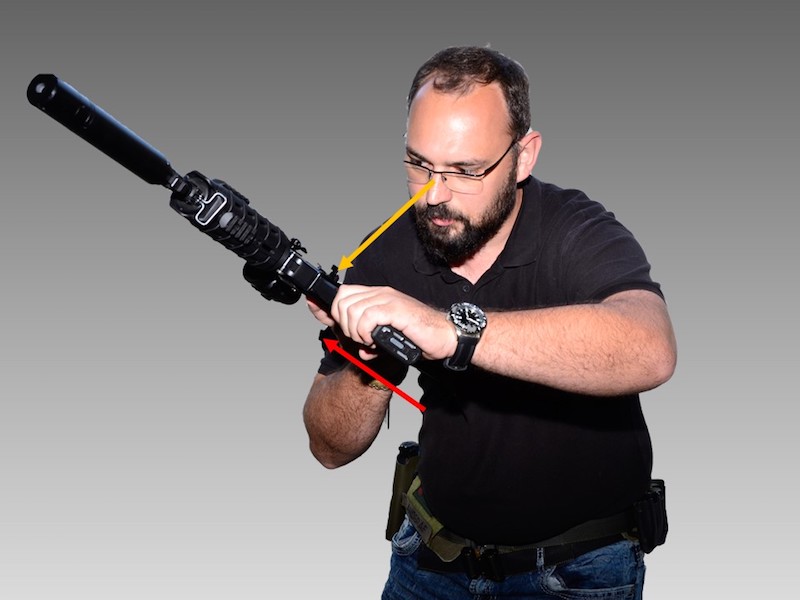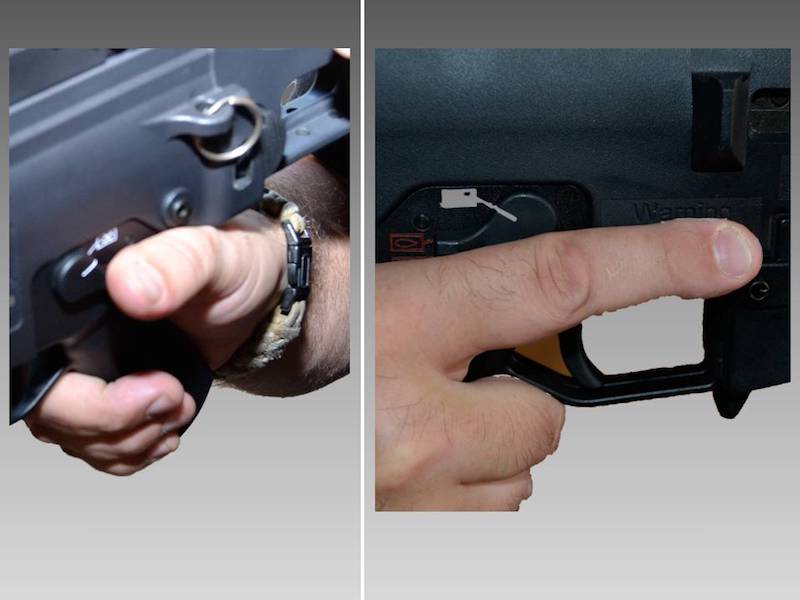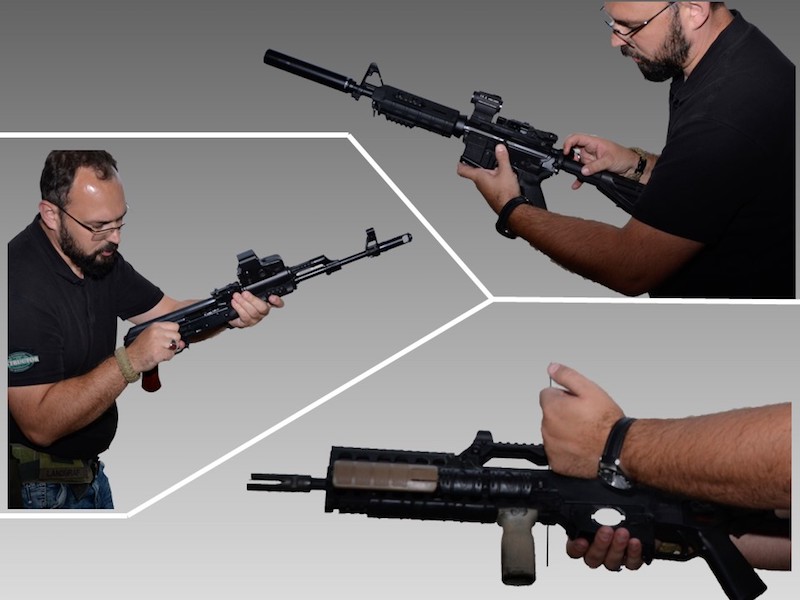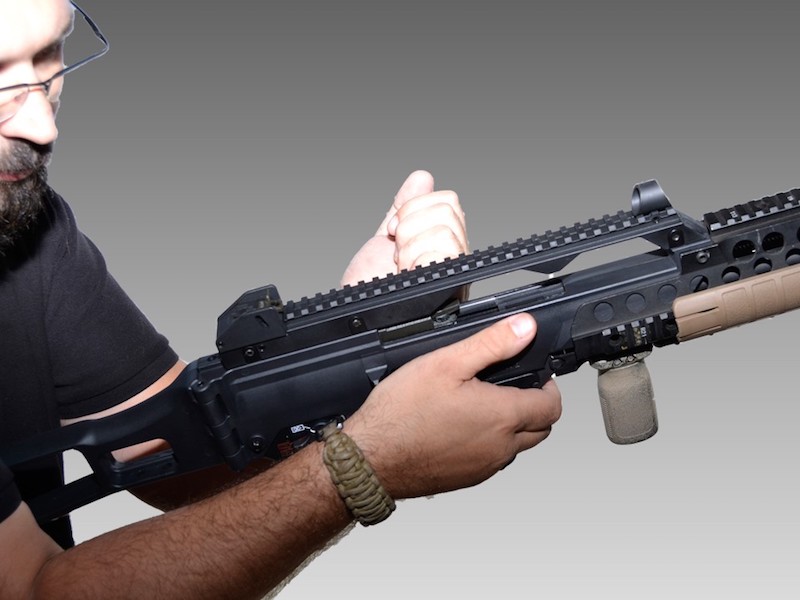Hol Dir den wöchentlichen SPARTANAT-Newsletter.
Dein Bonus: das gratis E-Book von SPARTANAT.
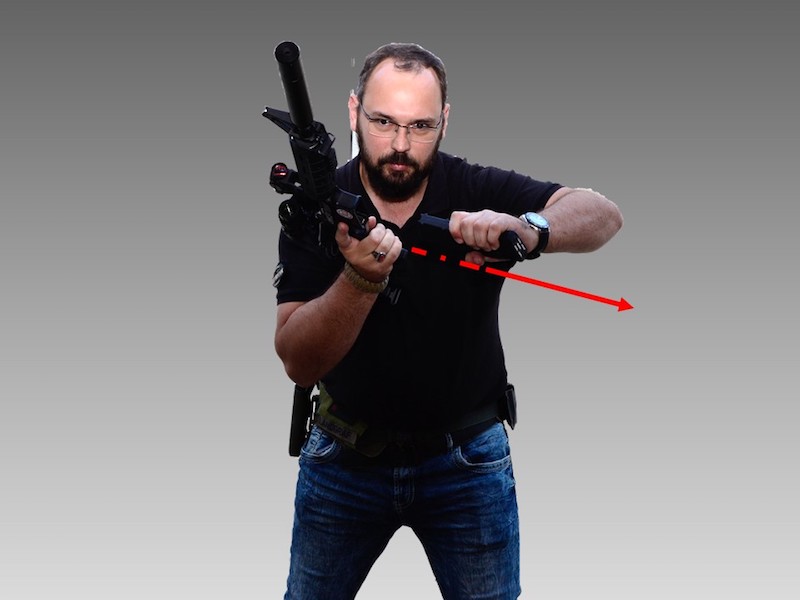
TRAINING MIT KL STRATEGIC (10): Sichere Ladetätigkeiten mit der Selbstladebüchse
Es erstaunt mich immer wieder, was man alles sehen muss, wenn man sich mal auf Schießständen und -anlagen bewegt und mit Aufmerksamkeit betrachtet, was einem da geboten wird. Gerade im Umgang mit Selbstladebüchsen ergeben sich da häufig Bilder, die man lieber nicht live gesehen hätte.
Es erstaunt mich immer wieder, was man alles sehen muss, wenn man sich mal auf Schießständen und -anlagen bewegt und mit Aufmerksamkeit betrachtet, was einem da geboten wird. Gerade im Umgang mit Selbstladebüchsen ergeben sich da häufig Bilder, die man lieber nicht live gesehen hätte. Kommt man dann mit Beteiligten ins Gespräch, stellt man fest, dass falsch verstandene Sicherheit und häufig mangelnde Ausbildung und Verständnis für Abläufe dazu führen, dass so simple Dinge wie Ladetätigkeiten teilweise seit vielen Jahren von Unwissenden schlichtweg so falsch weitergegeben werden, dass sich daraus schon eine Gefährdung ergibt.
Zugegeben, solches Verhalten ist nicht die Regel, stellt aber das Ergebnis eines immer wieder anzutreffenden, schleichenden Prozesses dar, der wiederrum sehr weit verbreitet scheint.
Selbstladebüchsen genießen – auf Grund öffentlicher Panikmache und falscher Anschuldigungen durch fachfremde „Unwissenheitsprediger“ keinen guten Ruf. Doch auch die Schützen selber bzw. deren regelungsgebenden Institutionen tragen einen großen Teil zu diesem Bild bei, indem gerade diese Waffen als besonders gefährlich im Umgang dargestellt und entsprechend wie hochexplosive, rohe Eier behandelt werden. Aus diesem Grund möchte ich mich einmal mit dem Thema Ladetätigkeiten an Selbstladebüchsen eingehender befassen.
Sicherheitsüberprüfung
Die erste Sicherheitsregel (in welcher Schärfe auch immer ausgelegt) besagt, dass eine Waffe immer als geladen zu betrachten ist. Ich möchte da einen Schritt weiter gehen und sage, dass eine Waffe so lange als geladen zu betrachten ist, bis man sich vom Ladezustand überzeugt hat. Auch wenn ich in den vorhergehenden Artikeln zu Ladetätigkeiten darauf verzichtet habe, sollte klar sein, dass eine Sicherheitsüberprüfung stets die erste Handlung sein sollte, wenn man eine Waffe – wo auch immer her – in die Hand nimmt.
Dies erfolgt in folgenden Schritten:
- Waffe aufnehmen, Mündung in sichere Richtung halten
- Waffe entladen (Magazin entnehmen, Verschluss öffnen)
- Blick in das/die Patronenlager – prüfen, dass diese frei von Munition sind
Erst wenn man sich so über den Ladezustand informiert hat, kann man davon ausgehen, eine sicher entladene Waffe in der Hand zu halten. Der größte Fehler den man machen kann, ist davon auszugehen, dass es eine Waffe wohl schon entladen ist.
Laden
Wie in dieser Serie schon mehrfach angesprochen, empfiehlt es sich, alle Manipulationen an Waffen im Arbeitsbereich (siehe Teil 6 der Serie) durchzuführen. Hier ergibt sich eine Konvergenz aus kurzen Wegen, einfacher Kontrolle, größtmöglichem Arbeitsraum und arbeitsökonomisch effektiver Ablaufgestaltung – kurz gesagt, keine Problem und schnelles Arbeiten.
Zum Laden wird die SL-Büchse in den Arbeitsbereich gebracht, indem die Schulterstütze mit dem Schussarm am Körper gehalten und die Mündung leicht angehoben wird. Somit ist gewährleistet, dass die Waffe automatisch leicht eingedreht und sicher kontrolliert wird, während der Ablauf abgearbeitet wird. SL-Büchsen verfügen i.d.R. über ein austauschbares Magazin, welches in den Magazinschacht des Gehäuses eingesetzt wird. Einige wenige, ältere Modelle verfügen über ein internes Magazin, welches über einen Ladestreifen befüllt wird. Für diese Modelle gelten grundsätzlich die gleichen Abläufe, nur dass hierbei die Waffe mit der Auswurföffnung zum Schützen hin eingedreht, der Ladestreifen angesetzt und die Patronen in die Waffe gedrückt werden, anstatt das Magazin einzurasten. Im Weiteren gehe ich daher nur auf diejenigen SL- Büchsen mit externem Magazin ein.
Hier wird das Magazin mit der Arbeitshand erfasst und mit einer Bewegung in den Magazinschacht des Gehäuses eingesetzt.
Dabei wird zugleich der feste Sitz des Magazins im Gehäuse geprüft. Im Anschluss wird der Verschluss der gesicherten Waffe repetiert und damit eine Patrone aus dem Magazin in das Patronenlager zugeführt. Dabei sind zwei Dinge zu beachten:
- Verschluss wird in die hinterste Position geführt und dann nach vorne schnellen gelassen. Der Druck der Schließfeder muss den Verschluss vorbringen, dabei genügend Druck entwickeln, um die Zuführung aus dem Magazin sicher zu stellen und den Schluss im Patronenlager sicher zu verriegeln. Somit wird die Funktion der Waffe sicher gestellt. Wird der Verschluss nach Vorne geführt (Möglichkeit bei leisen Fertigladen), muss dieser häufig von Hand komplett verriegelt werden. Ist nun die Schließfeder bereits erlahmt, gebrochen oder z.B. das Patronenlager verschmutzt, oder die Munition korrodiert, kann dies zu Funktionsstörungen führen, welche man so nicht im Vorfeld feststellen kann.
- Der Abzugsfinger berührt nicht den Abzug, sondern liegt gestreckt am Gehäuse an!
Nun ist die Waffe fertig geladen und schussbereit. Um die tatsächliche Munitionszuführung zu kontrollieren gibt es zwei Möglichkeiten, die sowohl tagsüber, als auch bei Nacht und eingeschränkter Sicht funktionieren.
- Möglichkeit
Ladekontrolle durch zurückziehen des Verschlusses (brass check). Hierbei wird der Verschluss so weit manuell zurück geführt, dass die Patronenhülse in der Auswurföffnung sichtbar ist, die Patrone aber noch nicht so weit ausgezogen ist, dass sie aus dem Patronenlager hinaus ragt. Auf diese Weise kann durch Blick oder Ertasten (eingeschränkte Sicht) geprüft werden, ob eine Patrone zugeführt wurde. Danach wird der Verschluss wieder nach vorne schnellen gelassen, und geprüft, dass dieser auch verriegelt hat.
- Möglichkeit
Ladekontrolle über Lage der Patronen im Magazin. Die Zuführung aus Magazinen erfolgt bei SL-Büchsen in der Regel doppelreihig. Dies bedeutet, dass die Patronen jeweils rechts und links versetzt im Magazin auf dem Zubringer liegen. Wenn man weiß, auf welcher Seite die oberste Patrone beim Einsetzen des Magazin lag, entnimmt man nach dem Durchladen das Magazin und prüft, ob sich die oberste Patrone nun auf der entgegengesetzten Seite des Magazins befindet.
Ist dies der Fall, bedeutet das, dass die vorherige Patrone aus dem Magazin aus dem Magazin in die Waffe zugeführt wurde. Dies kann visuell geprüft, oder auch ertastet werden.
Beim wieder Einsetzen des Magazin ist darauf zu achten, den festen Sitz erneut zu überprüfen, um Störungen zu vermeiden.
Magazinwechsel
Wie bei der Pistole wird auch hier zwischen dem Magazinwechsel (tactical reload) und dem Nachladen (speed reload/slidelock reload) unterschieden. Der Magazinwechsel erfolgt immer dann, wenn die Waffe noch nicht leer geschossen, und Zeit genug ist, um auf ein volles Magazin zu wechseln.
Dazu wird zunächst die Waffe gesichert und in den Arbeitsbereich gebracht. Gleichzeitig löst sich die Arbeitshand von der Waffe und greift ein langsames Magazin (siehe Teil 11 Ausrüstung).
 Für den Wechsel gibt es mehrere Möglichkeiten, diesen durchzuführen. Die Art und Weise richtet sich in erster Linie nach der Art und Weise der Magazinauslösung.
Für den Wechsel gibt es mehrere Möglichkeiten, diesen durchzuführen. Die Art und Weise richtet sich in erster Linie nach der Art und Weise der Magazinauslösung.
Waffen mit einem Magazinhaltehebel hinter dem Magazin ermöglichen folgende Abläufe:
- höhenversetzter Magazinwechsel
Bei dieser Methode greift die Arbeitshand das neue Magazin so tief und kontrolliert wie möglich. Das Magazin wird dann so hoch wie möglich an das in der Waffe befindliche Magazin angesetzt, so dass beide gegriffen werden können und mit dem Daumen der Magazinhaltehebel betätigt werden kann.
Das alte Magazin wird entnommen und das neue Magazin eingesetzt. Durch den Höhenversatz kann dies problemlos bewerkstelligt werden, ohne den Magazinschacht zwischen altem und neuen Magazin einfädeln zu müssen.
- abgewandelter L-Griff
Beim abgewandelten L-Griff wird das neue Magazin mit der Arbeitshand so gegriffen, dass der Magazinboden in der eingedrehten Handfläche eingeklemmt gehalten wird. Hier ist besonders auf die korrekte Ausrichtung des Magazins in der Magazintasche zu achten!
Das neue Magazin wird hoch in einem 90° Winkel an das in der Waffe befindliche Magazin angesetzt, so dass mit dem Daumen der Arbeitshand der Magazinhaltehebel betätigt werden kann.
Das alte Magazin wird entnommen, die Arbeitshand um 90° gedreht, so dass das neue Magazin eingesetzt werden kann.
Waffen mit einem seitlichen Magazinhaltehebel/ Magazinauslösung ermöglichen folgende Methoden:
- höhenversetzter Magazinwechsel
Der Ablauf erfolgt gleich dem oben beschriebenen, jedoch wird das Magazin mit dem Abzugsfinger an der seitlichen Magazinauslösung ausgeworfen. Dies hat den Vorteil, dass der Abzugsfinger automatisch außerhalb des Abzuges arbeiten muss. Zudem kann der Griff der Arbeitshand kontrollierter erfolgen, da hier keine zusätzliche Betätigung eines Hebels notwendig ist.
- L- Griff
Mit dem L- Griff erfolgt der Magazinwechsel schnell und maximal kontrolliert. Hierbei wird das neue Magazin mit der Arbeitshand ergriffen und um 90° nach Vorne gedreht an der Unterkante des in der Waffe befindlichen Magazins angesetzt.
Beide Magazine werden kontrolliert ergriffen, mit dem Abzugsfinger die Arretierung gelöst und das alte Magazin aus der Waffe entnommen. Nach einer Drehung um 90° kann das neue Magazin eingesetzt werden. Es ist dabei auf die korrekte Ausrichtung des Magazin zu achten!
Nach dem Einsetzen des neuen Magazin erfolgt für alle Methoden gleich der weitere Ablauf. Das alte Magazin wird entsprechend verstaut, um die Restmunition später noch nutzen zu können.
Im Anschluss kann – wie bei der Pistole – eine Ladekontrolle erfolgen (Ablauf: siehe „Laden“).
Nachladen
Der Unterschied zwischen dem Magazinwechsel und dem Nachladen wurde ja weiter oben bereits angesprochen, daher gehe ich hier nicht mehr auf die Unterscheidungsmerkmale ein. Es genügt, wenn man weiß, dass beim Nachladen die Zeit ohne Munition in der Waffe auf ein absolutes Minimum reduziert werden muss.
So wie auch bei der Pistole, zeigt eine Selbstladebüchse i.d.R. an, wenn ihr das „Futter“ ausgegangen ist, indem der Verschluss in der hinteren Position verriegelt – Ausnahme hierzu bilden die diversen AK Plattformen. Spätestens jedoch, wenn anstatt einem Mündungsknall nur ein leises „Klick“ zu hören ist, sollte man sich als Schütze die Frage stellen, was da verkehrt gelaufen ist. Ein leichtes Eindrehen der Waffe im Anschlag, verbunden mit einem prüfenden Blick wirkt hier Wunder.
Stellt man fest, dass keine Munition mehr nutzbar bereitgestellt wird, weil sie einfach nicht mehr vorhanden ist, erfolgt das Nachladen. Hier gibt es diverse Varianten, welche alle eine Form der Daseinsberechtigung haben. Ihnen allen gemein ist, dass Sie die grundlegende Primärproblematik beheben, ohne weitere Gedanken an unnötige Abläufe oder materialistische Bedenken einzubeziehen. Die praktikabelsten und am weitesten verbreiteten Methoden möchte ich hier kurz darstellen:
- Methode: manuelles Entfernen des leeren Magazins
Bei dieser Methode wird das leere Magazin in einer extra Bewegung aus der Waffe entfernt. Dies erfordert einen gewissen Zeitaufwand, stellt jedoch sicher, dass das Magazin sofort und kompromisslos entfernt wird.
Hierzu wird nach dem Prüfblick das Magazin mit der Arbeitshand erfasst, der Magazinhaltehebel betätigt und das leere Magazin mit einer kräftigen Bewegung aus der Waffe heraus gezogen.
Im Verlauf dieser Bewegung wird das Magazin nach dem sicheren Entfernen aus der Waffe fallen gelassen und die Bewegung weiter geführt, um das schnelle Magazin (siehe Teil 11 Ausrüstung) zu ergreifen und zügig zur Waffe zu führen.
Während all dieser Abläufe, abgesehen vom Prüfblick, liegt der Blickfokus auf dem Vorfeld, um etwaige Ziele und deren Verhalten zu erfassen und im weiteren Verlauf wieder konsequent beschießen zu können.
Erst in der Annäherung des neuen Magazins an den leeren Magazinschacht der Waffe wechselt der Fokus auf die sich annähernden Objekte, um ein wildes „Rumgestochere“ zum Einführen des Magazins zu vermeiden. Ziel ist es hier, das Magazin in einer flüssigen Bewegung einzusetzen, um die Bewegungsabläufe so effizient wie möglich zu gestalten.
Nach dem Einsetzen und Einrasten des neuen Magazins wird die Bewegungsrichtung beibehalten und weitergeführt, um den Verschluss der Waffe zu ergreifen, in den hintersten Anschlag zu führen und von dort vorschnellen zu lassen.
Damit ist die Waffe wieder schussbereit und der Schießablauf kann weitergeführt werden.
Diese Methode funktioniert zu 100% mit jeder Waffenplattform.
- Methode 2: Auswerfen über Magazinhaltehebel
Diese Methode bietet sich insbesondere für AR/OA Plattformen an, welche über einen mit dem Abzugsfinger erreichbar platzierten Magazinhaltehebel verfügen. Jedoch kann sie auch für Waffen mit hinter dem Magazin platzierten Haltehebeln genutzt werden, sofern sich diese sicher mit dem Abzugsfinger erreichen lassen.
Hier startet der Ablauf ebenfalls mit dem Prüfblick im Anschlag. Danach wird die Waffe in den Arbeitsbereich gebracht und unter dem Schussarm am Körper fixiert, so dass der Magazinschacht einsehbar ist.
Während dieser Bewegung wird der Magazinhaltehebel betätigt und die Waffe mit einer ruckartigen Bewegung eingedreht, so dass Flieh- und Schwerkraft das leere Magazin aus der Waffe befördern.
Parallel dazu greift die Arbeitshand das neue, schnelle Magazin und führt dieses zur Waffe in den Arbeitsbereich. Es ist darauf zu achten, dass der Gesamtablauf so zügig wie möglich erfolgt, jedoch im Moment des Zusammenführens von Magazin und Waffe die Geschwindigkeit und der Fokus angepasst werden, um ein sicheres und reibungsloses Einsetzen zu gewährleisten.
Nach Einsetzen und Überprüfen des festen Sitzes, wird der Verschluss durch betätigen des Fanghebels geschlossen. Das vollständige Verriegeln wird hierbei durch das Betätigen der Schließhilfe (forward assist button) gewährleistet und die Waffe kann wieder schussbereit in den Anschlag gebracht werden.
Entladen
Auch das Entladen erfolgt im Arbeitsbereich. Während sich hier im Bereich der Schützen eine gewisse Eigendynamik in der Kreativität der Ablaufgestaltung entwickelt hat, möchte ich hier die einfachste und sicherste Methode eingehender darstellen und auf eine einfache Abwandlung dazu eingehen, die sich mit etwas Übung sicher umsetzen lässt, ohne dabei das Maß an Sicherheit im Umgang zu mindern.
Beim Entladen einer Waffe geht es schlichtweg darum, die Waffe ohne Schussabgabe von der Munition zu befreien. Hierzu ist der erste Schritt das Sichern der Waffe. Selbstladebüchsen verfügen normalerweise immer über eine außen liegende Sicherung, die im Idealfall beidseitig zu bedienen ist. Hier sollte im Sinne einer stressresistenten Handhabung die Bedienung mit Daumen (Entsichern) und Zeigefinger (Sichern) der Schusshand geübt werden.
Nach dem Sichern der Waffe wird diese in den Arbeitsbereich gebracht und mit dem Schussarm am Körper eingedreht fixiert, so dass der Magazinschacht direkt einsehbar ist. Das Magazin wird entnommen und zunächst provisorisch verstaut (z.B. Abwurfbeutel). Dabei ist darauf zu achten, dass der Abzugsfinger nicht zurück an den Abzug geht.
Die Waffe verbleibt nach rechts (Auswurföffnung) eingedreht am Körper, die Mündung nach oben orientiert, während mit der Arbeitshand der Verschluss ergriffen und in die hinterste Stellung geführt wird.
Die zugeführte Patrone wird dadurch aus dem Patronenlager gezogen und aus der Waffe ausgeworfen. Der Blick folgt beim Auswerfen der Patrone, um
- sicher zu gehen dass diese tatsächlich ausgeworfen wurde und
- die Patrone nach Abschluss des Entladens wieder zu finden und aufzunehmen.
Mit dem Verschluss in hinterster Stellung erfolgt der Blick in das Patronenlager, um dies optisch zu prüfen, dass keine Patrone, Schmutz oder Beschädigungen vorhanden sind. Weiterhin wird die Verschlusslaufbahn optisch geprüft.
Um diesen Vorgang zu vereinfachen, kann der Verschluss in der hintersten Position durch Betätigen des Verschlussfanghebels (Je nach Bauart/ Modell unterschiedlich) arretiert werden. Bei Dunkelheit und eingeschränkter Sicht ist dies zu empfehlen, um mit einem Finger der Schusshand durch die Auswurföffnung in das Patronenlager zu greifen und dieses zu prüfen.
 Als Variation kann beim Auswerfen der Patrone mit der Schusshand ein „Fangkorb“ vor der Auswurföffnung gebildet werden, während die Waffe dabei gehalten wird. So kann die Patrone aufgefangen werden. Der weitere Ablauf bleibt wie beschrieben.
Als Variation kann beim Auswerfen der Patrone mit der Schusshand ein „Fangkorb“ vor der Auswurföffnung gebildet werden, während die Waffe dabei gehalten wird. So kann die Patrone aufgefangen werden. Der weitere Ablauf bleibt wie beschrieben.
Nach dem Überprüfen der Sicherheit an der Waffe im sogenannten „Vier Augen Prinzip“ wird diese wieder in den Anschlag gebracht und der Verschluss entriegelt, so dass dieser wieder schließt. Die Waffe wird im Anschlag in Ziel gebracht, entsichert und trocken abgekrümmt. Dies erfolgt mit der gleichen Konzentration und den gleichen Abläufen wie der scharfe Schuss, so dass hiermit ein weiteres Mal der Schießablauf geübt wurde.
Als Abschluss des Entladens wird die einzelne Patrone wieder aufmunitioniert und ggf. ein Munitionsausgleich (siehe Teil 11 Ausrüstung) durchgeführt. Danach ist auch diese Ladetätigkeit sicher abgeschlossen.
Die Ladetätigkeiten für Selbstladebüchsen können also sehr simpel sein und trotzdem sicher. Es bedarf keiner aufwändigen Kunststückchen, extravaganten Überprüfungsszenarien und/oder zusätzlicher Sicherheitsfähnchen, wenn man verantwortungsbewusst ist und als Schütze ein gewisses Mindestmaß an Vertrauen der Anwesenden genießt.
In diesem Sinne – Denkt einfach mal drüber nach!
Khi Pa
Teil1: Alles im Griff
Teil2: Der Anschlag
Teil3: Der natürliche Haltepunkt
Teil4: Die Augendominanz
Teil5: Die Abzugsarbeit
Teil6: Der Arbeitsbereich
Teil7.1: Zielen, die Gretchenfrage
Teil7.2: Zielen, alles auf den Punkt gebracht
Teil7.3: Was Tun Mit Zielfernrohren
Teil8: Sichere Ladetechniken für Pistolen und Revolver
Teil9: Sichere Ladetätigkeiten für Flinten
Teil10: Sichere Ladetätigkeit mit der Selbstladebüchse
Teil11: Alles über Ausrüstung
Teil12: Heimtraining
KL STRATEGIC im INTERNET: http://kl-strategic.com
KL STRATEGIC auf FACEBOOK: www.facebook.com/KL-STRATEGIC
SPARTANAT ist das Online-Magazin für Military News, Tactical Life, Gear & Reviews.
Schickt uns eure News: [email protected]
Werbung
Hol Dir den wöchentlichen SPARTANAT-Newsletter.
Dein Bonus: das gratis E-Book von SPARTANAT.


